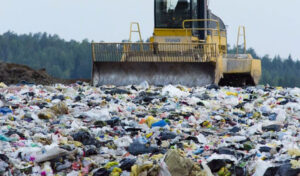Graphic Generated with ChatGPT
When we think of fast fashion, the images that come to mind are often stylish clothes, bargain prices, and ever-changing trends. But behind the racks of affordable outfits lies a massive environmental footprint — one that is quietly damaging our lands and draining our freshwater resources. As conservationists, we cannot ignore the profound impact this industry has on two of our most vital assets: soil and water.
What Is Fast Fashion?
Fast fashion refers to the rapid production of inexpensive clothing to meet the latest trends. It relies on low-cost labor, cheap synthetic materials, and a system designed to encourage frequent buying and discarding. While this model keeps consumers engaged and profits high, it places a heavy burden on the environment. Due to its high demand, the required cotton production also contributes to its excessive environmental impact.
The Impact on Land Conservation
1. Agricultural Land Used for Fibers
Producing natural fibers like cotton requires vast tracts of land. In countries like India, China, and the U.S., millions of acres are devoted to cotton farming — land that could otherwise support biodiversity or be used for food production. Worse, these lands are often over-farmed, degrading the soil through monocropping and overuse of chemical fertilizers.
2. Waste Accumulation in Landfills
According to the EPA, Americans throw away over 11 million tons of textile waste each year. Most of it ends up in landfills, where synthetic fibers such as polyester — derived from fossil fuels — can take hundreds of years to decompose. As these materials break down, they release microplastics and toxins into the soil, impairing soil health and contaminating local ecosystems.
3. Deforestation for Grazing and Fibers
Fast fashion also drives demand for animal-derived materials like leather and wool. This often leads to deforestation, especially in regions like the Amazon, where forests are cleared for grazing cattle. The result? Loss of biodiversity, carbon sinks, and critical habitats.
The Impact on Water Conservation
1. Water-Intensive Crops
Cotton is one of the thirstiest crops on Earth. It takes about 2,700 liters of water to make a single cotton shirt — roughly what one person drinks in two and a half years. In water-scarce regions, cotton production can divert essential freshwater from communities and ecosystems.
2. Chemical Pollution
To dye fabrics and treat materials, fast fashion relies on a toxic cocktail of chemicals. These include azo dyes, heavy metals, and formaldehyde — all of which often end up in rivers and lakes due to inadequate wastewater treatment. In places like Bangladesh, entire waterways have been rendered biologically dead because of fashion-related pollution.
3. Microfiber Pollution
Synthetic fabrics like polyester shed tiny plastic particles — microfibers — each time they’re washed. These particles are too small to be filtered by wastewater treatment plants and end up in rivers, lakes, and oceans. Microfibers now make up a significant portion of aquatic plastic pollution, threatening marine life and contaminating drinking water sources.
What Can Be Done?
Fast fashion is not a problem without solutions. Here’s how consumers and industries can support land and water conservation:
- Choose Sustainable Brands: Support companies that prioritize organic fibers, water recycling, and ethical production. Recognizing that not all can afford to do this, it is still worth doing even once or twice.
- Buy Less, Choose Well: Shift toward a minimalist wardrobe. Invest in quality over quantity.
- Repurpose and Recycle: Donate, resell, or recycle clothing instead of tossing it into the trash.
- Support Policy Change: Advocate for stronger environmental regulations on textile production and waste disposal.
- Education and Spread Awareness: Share knowledge about fast fashion’s impact with friends, family, and community groups. The Conservation Foundation has long been involved with environmental education. For example, see 50 Things You Can Do To Address Climate Change.
Final Thoughts
Fast fashion may seem like a harmless indulgence, but its real cost is paid in depleted soils, polluted rivers, and vanishing habitats. By rethinking our relationship with clothing, we can help protect the land and water that sustain life — not just for us, but for future generations.
Conservation isn’t just about saving forests or protecting rivers; it’s about reimagining the everyday choices that shape our world. Clothing is one of them. Let’s wear our values, not just our style.
So how can you contribute to conservation efforts that counter the effects of fast fashion on our environment? Well, land and water conservation are what The Conservation Foundation does every day in every season — winter, spring, summer, and fall — and they have been doing that for more than 50 years. We can all do more together than we can alone. Join our collective momentum – become a member today!
By Steve Stawarz, Oak Brook
DuPage County Advisory Council Member


